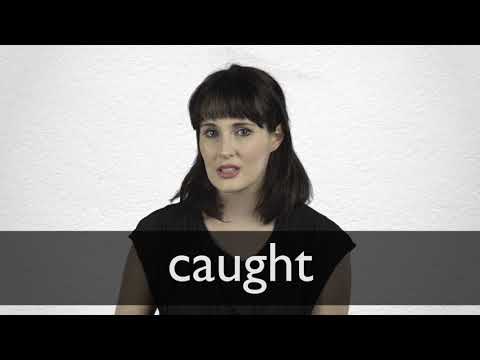Caught On Camera: Exposing The Lies In Real Time

Executive Summary

In today’s hyper-connected world, video evidence has become the ultimate arbiter of truth. From seemingly innocuous social media posts to critical legal proceedings, footage captured on camera holds immense power. This article delves into the intricacies of verifying video authenticity, analyzing its persuasive impact, and understanding how easily manipulated footage can spread misinformation. We explore the tools and techniques used to detect fabricated or doctored videos, examining the implications for individuals, businesses, and society as a whole. Ultimately, we aim to equip readers with the critical thinking skills needed to navigate the increasingly complex landscape of digital video evidence. Understanding how to discern truth from falsehood in the digital realm is no longer a luxury; it’s a necessity.

Introduction
The internet is awash with videos – everything from heartwarming pet antics to alarming news events. But how much of what we see online is actually true? In an era of sophisticated editing software and readily available deepfake technology, distinguishing genuine footage from cleverly crafted deception has become a critical skill. This article unpacks the methods used to manipulate video, exposes common techniques used to spread misinformation, and provides practical advice on how to critically assess the validity of what you see online. The ability to identify fabricated or altered video is crucial for responsible online engagement and informed decision-making.
Frequently Asked Questions (FAQs)
-
Q: How can I tell if a video has been manipulated? A: There are several visual clues, such as inconsistencies in lighting, shadows, or audio, as well as metadata discrepancies that can help identify manipulated footage. Advanced techniques like deepfake detection software can also be employed.
-
Q: What are the legal implications of sharing a manipulated video? A: Depending on the content and intent, sharing a manipulated video can lead to severe legal consequences, including defamation lawsuits, criminal charges, and reputational damage.
-
Q: What is the role of social media platforms in combating fake videos? A: Social media companies are increasingly investing in technology and policies to detect and remove manipulated videos from their platforms. However, the rapid evolution of deepfake technology presents an ongoing challenge.
Deepfake Detection Techniques
Deepfakes, convincingly realistic videos that feature someone’s likeness performing actions they never actually did, are a significant concern. Detecting deepfakes requires a keen eye for subtle inconsistencies and the utilization of specialized tools.
-
Analyzing Facial Expressions: Deepfakes often struggle to perfectly replicate subtle nuances in facial expressions, like micro-expressions or blinking patterns. Inconsistencies here are a major red flag.
-
Examining Lighting and Shadows: Discrepancies in lighting and shadow placement can indicate manipulation. If the lighting doesn’t match the supposed setting or shadows appear unnatural, it raises suspicion.
-
Checking for Artifacts: Poorly created deepfakes might leave behind artifacts, such as pixelation or blurring around the edges of faces or objects.
-
Utilizing Deepfake Detection Software: Several software applications are specifically designed to analyze videos and detect anomalies indicative of deepfakes. These tools employ advanced algorithms to identify inconsistencies undetectable to the naked eye.
-
Verifying Source and Context: Always verify the source of a video and research its context. Reputable news organizations are less likely to publish manipulated footage.
-
Considering the Overall Narrative: Does the video align with known facts or information? Does the narrative seem too good (or too bad) to be true? A suspicious narrative can indicate manipulation.
The Impact of Misinformation Spread Through Video
The viral nature of video, combined with the potential for manipulation, creates a breeding ground for misinformation. False narratives spread rapidly, causing significant damage to individuals and institutions.
-
Reputational Damage: False videos can irrevocably damage an individual’s or organization’s reputation, impacting their careers, relationships, and public standing.
-
Political Manipulation: Deepfakes and manipulated videos can be used to sway public opinion during elections, undermining democratic processes.
-
Social Unrest: Fabricated videos can incite violence, hatred, and social unrest by promoting false narratives and inciting fear.
-
Financial Losses: Businesses can suffer substantial financial losses due to the spread of misleading videos, impacting investor confidence and consumer trust.
-
Legal Ramifications: The creation and distribution of false videos can lead to severe legal consequences, including defamation lawsuits and criminal charges.
-
Erosion of Trust: The proliferation of false videos erodes public trust in media, institutions, and authority figures, leading to widespread cynicism.
The Role of Social Media Platforms
Social media platforms bear a significant responsibility in addressing the challenge of manipulated videos. While they’ve made strides in implementing detection and removal mechanisms, the battle remains ongoing.
-
Content Moderation Policies: Many platforms are developing increasingly sophisticated content moderation policies to identify and remove manipulated videos.
-
AI-Powered Detection Tools: Platforms are actively investing in AI-powered tools that can detect manipulated videos with greater accuracy.
-
Fact-Checking Initiatives: Collaboration with fact-checking organizations is crucial in verifying the authenticity of videos and debunking misinformation.
-
User Reporting Mechanisms: Platforms rely on users to report suspicious content, providing valuable feedback for their moderation systems.
-
Transparency and Accountability: Clear and transparent reporting on the effectiveness of their efforts in combating misinformation is paramount.
-
Media Literacy Initiatives: Educating users about the methods used to create manipulated videos and how to identify them is crucial for a proactive approach.
Combating the Spread of False Videos: A Multi-pronged Approach
Tackling the problem of manipulated videos requires a comprehensive approach involving technological solutions, educational initiatives, and legal frameworks.
-
Technological Advancements: Continued development of sophisticated detection tools is crucial in identifying deepfakes and manipulated videos more effectively.
-
Media Literacy Education: Educating the public about media literacy, critical thinking, and the identification of manipulated videos is essential.
-
Legal Frameworks: Robust legal frameworks are necessary to hold perpetrators of false video creation and distribution accountable.
-
International Cooperation: International collaboration is essential to address the global nature of misinformation spread through manipulated videos.
-
Platform Accountability: Social media platforms need to increase transparency and accountability in their efforts to combat misinformation.
-
Community Engagement: Empowering communities to identify and report manipulated videos enhances collective efforts against the spread of misinformation.
Conclusion
The prevalence of manipulated videos presents a significant challenge to our ability to discern truth from falsehood in the digital age. While the technology used to create deepfakes and other forms of manipulated media continues to evolve, so too do the methods of detection and counter-measures. By combining technological advancements with robust media literacy education, clear legal frameworks, and the collective responsibility of social media platforms, we can work towards a future where the spread of misinformation is significantly mitigated. The ability to critically evaluate video evidence is no longer optional; it’s crucial for informed decision-making and responsible citizenship in the digital sphere. Learning to identify the subtle cues and employing available tools becomes a critical skill for navigating the complexities of online information.
Keywords: Deepfakes, Video Manipulation, Misinformation, Fake Videos, Media Literacy
